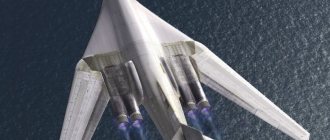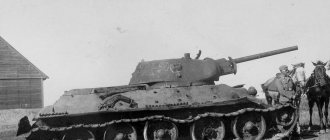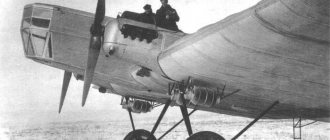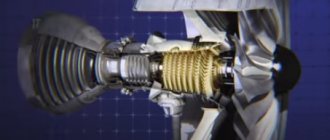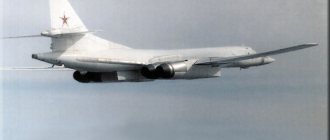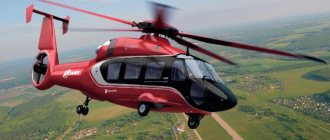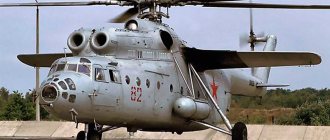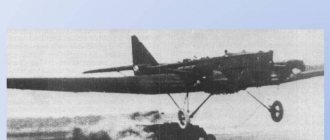Related article:
The Russian Ministry of Defense responded to the comparison of the Tu-160 with “museum exhibits”
Purchases of the F-15 Eagle fighter have been resumed - of course, in the new modification F-15EX Eagle II, but after a pause of more than twenty years (!) - the last deliveries to the US Air Force were in 2001.
The new production line is producing the F-16V Viper light fighter. Despite the availability and active export of its “replacement”, the fifth-generation fighter F-35, the old man, originally from the 70s of the last century, is still in demand among financially limited allies.
It was decided to write off most of the fleet of high-altitude unmanned reconnaissance aircraft RQ-4 Global Hawk, but the ancient U-2s, like mammoth mummies, continue to serve. Of course, these are not direct analogues of the plane on which Powers, shot down by Soviet air defense in 1960, flew - modern ones were produced in the 1980s. But they, too, have long been assigned truancy in aviation cemeteries.
In strategic aviation the situation is completely unique. Yes, the Americans have prototypes of the new B-21 Raider bomber in production, the first flight of which, by the way, is expected in the coming 2022. The vehicle should, according to current plans, replace both the B-1B Lancer, the fleet of which has been severely worn out in local wars of the last two decades and has been reduced by half to simplify maintenance, and the B-2A Spirit, of which, on the contrary, there are too few - after receiving a sufficient number of close ones. concept of the B-21, maintaining them will become unprofitable.
Related article:
"White Swans" will replace "Bears"
This means that the supernova Raider will serve over the next decades together with... the B-52 Stratofortress.
With those very symbols of the Vietnam War, who by the time of their textbook participation in the operations of 1972 were, to put it mildly, not young. In fact, all B-52Hs still alive were produced in 1961-62. And nothing, according to current plans they will have to pull the burden right up to 2050. Why? Yes, because it is a platform that is familiar in operation and convenient for the same hypersound. And the most painful issue - with the engines - was resolved by recently signing a contract for remotorization, which had been discussed sporadically since the 1960s.
For your information. The current US strategic air force fleet includes 76 B-52Hs, 45 B-1Bs and 20 B-2As. Only the B-2 and some of the B-52 are equipped with systems for the use of nuclear weapons; the rest do not count toward the START Treaty. At least a hundred B-21s are planned to be produced to replace two of the three types (and some B-52s).
A similar situation has developed in Russia, although with noticeable differences. They consist in a significantly shorter service life of Soviet-era aircraft: both due to the initial shorter lifespan than their Western counterparts, and also due to, to put it mildly, the difficult period of the 1990s. As a result, we had to deal, in particular, with replacing the tactical aircraft fleet earlier than our Western colleagues. This issue was resolved to a large extent through the purchase of deeply modernized modifications of the T-10 platform (the internal index of the Su-27 aircraft family) - from the Su-30 multi-role fighters, to the Su-34 attack aircraft and the Su-34, focused more on gaining air supremacy. 35. Thanks to active procurement over the past decade, the Russian tactical aviation fleet has become physically one of the youngest in the world, which provides a good margin of time for the quiet development of new aircraft. At the same time, in the USA, part of the fleet is already in a very worn-out condition and is operated with significant restrictions. For example, the average age of F-15C fighters is almost 38 years, and T-38 trainers are about 60 years.
How the White Swans were saved
To analyze the reasons for the decision to resume production of the Tu-160, we will focus on the strategic aviation fleet.
After the collapse of the USSR and a sharp reduction in the armed forces, a number of older types of aircraft were written off, and two strategic missile-carrying bombers remained in service - the Tu-95MS and Tu-160. There were still long-range Tu-22M3 bombers, but their capabilities were limited both by the lack of an in-flight refueling system and by the lack of long-range cruise missiles in the range of available weapons. Although this situation may change in the future (the development of the Tu-22M3 into the Tu-22M3M is a topic for another discussion), they were not taken into account as part of the strategic nuclear deterrent and were not limited to the START series of treaties.
The remaining missile carriers in service are fairly new aircraft for this type of aircraft. Despite their archaic appearance, the Tu-95MS Bears were built in the 1980s, and the Tu-160 began to enter the USSR Air Force only at the end of that decade. It would seem that the situation with the air component of the nuclear triad should have been rosy, but, unfortunately, everything is not so simple.
The collapse of the Soviet Union was extremely painful for strategic aviation due to a number of factors. First of all, because of the lack of money in the 1990s, when there was not enough money not only for planned combat training, but even simply for high-quality preservation of aircraft. Contrary to popular belief, preserving an aircraft does not mean that it is enough to cover it with a tarpaulin and abandon it. Mothballed cars also need to be serviced, and from time to time they also need to be flown over. In this situation, writing off the old types was, of course, the only right decision, but even concentrating efforts on a small number of new machines, they could not be properly maintained.
The already small number of combat-ready aircraft suffered even more due to the peculiarities of the basing of Soviet strategic forces: some of the heavy bomber regiments were located outside the RSFSR, in Ukraine and Kazakhstan. And if the Tu-95MS were withdrawn from Russia-friendly Kazakhstan without serious problems, then the Ukrainian authorities were not going to give the wealth that had fallen on them to Moscow cheaply (maybe they weren’t going to give it at all). And by a tragic coincidence, it was in the Ukrainian Priluki that the unit selected for re-equipment with the Tu-160 was located and received 19 vehicles at the time of independence - almost all serial ones.
In the end, in 1999-2000, in order to write off the accumulated gas debts, it was possible to buy back 8 aircraft (and 3 more Tu-95MS, equipment, spare parts and weapons). The rest were destroyed.
To understand the scale of this loss, you need to know this. At the time of the collapse of the USSR, they managed to make 26 vehicles out of a planned series of one hundred (symmetrical to the B-1 series), counting the early prototypes, which were limitedly suitable for combat service, and the second production vehicle, lost in an accident in 1987. In fact, Russia received mainly pre-production cars. In this situation, the Russian authorities of that time, in particular B. Yeltsin personally (who inspected the Tu-160 and Tu-95 in the Belarusian Machulishchi at an aircraft display that took place against the backdrop of a meeting of the Council of Heads of State of the CIS), decided: firstly, to curtail the production of the Tu-95MS , secondly, to continue production of the Tu-160.
Digital environment
The aircraft was created on a completely new technological basis using digital technologies.
Back in 2022, the UAC began the process of digitizing the production of the Tu-160 missile carrier. When carrying out this work, it was decided to use the principle of a “distributed design bureau”, when specialists from several design bureaus, sometimes located in different cities of Russia, worked on the drawings of various units and the airframe of the aircraft. Through dedicated communication channels in a single information space, the designers digitally recreated three-dimensional electronic models of the airframe components - wing, fuselage, tail.
The transition to working digitally allowed us to significantly speed up work on the project.
If it weren't for thermonuclear
Here, for the sake of historical justice, it is necessary to make a retreat. Undoubtedly, the collapse of the USSR and the subsequent events dealt a terrible blow to the Russian military-industrial complex and its armed forces. Even basic support for the army was then far from being in the first place in the priorities of the authorities. But still, there was some exception to this rule: in spite of everything, the strategic nuclear forces tried to somehow hold on. This can be explained by the desire to preserve the last sign of great power status, or the desire to have an asset-tool for bargaining with the West, or the basis and last component of defense capability (no matter how collapsed the conventional forces are, if the “nuclear shield” is alive, then Russia will be protected, at least from a major war).
One way or another, when scolding (absolutely rightly) the authorities of the 90s, you need to remember: if the military nuclear sector, unable to survive on exports, had been abandoned just like the rest, then we would not have a Topol-M today ", neither "Yars", nor "Boreev" with "Bulava", because all these programs were started at that time. And an example of how difficult it is to restore abandoned nuclear production is before our eyes today: the United States with its expensive and long-term program to restore mass production of plutonium pits - a key component of thermonuclear warheads. To date, the United States has lost and has not yet restored the ability to serially produce thermonuclear charges, and plans to return it only in the early 2030s.
Tu-160 (“160”, “K”, “70”) Black Jack Intercontinental strategic multi-mode missile carrier
History of creation In the service of the Fatherland Independent suffering Modifications
DESIGN FEATURES.
The Tu-160 aircraft is made according to a normal aerodynamic design with a variable geometry wing.
A special feature of the airframe is the integrated aerodynamic layout, in which the root fixed part of the wing is made integral with the fuselage and forms a single structure with it. This allows for more complete use of internal volumes to accommodate cargo, fuel, equipment, and also reduces the number of structural joints, which helps reduce the weight of the airframe. The airframe is made mainly of aluminum alloys (B-95, heat-treated to increase service life, as well as AK-4). The share of titanium alloys in the weight of the airframe is 20%; CM and fiberglass are used. Glued three-layer structures are widely used. The low swept wing with a large root flap and rotary consoles has a relatively high aspect ratio. The console rotation units (hinges) are located at 25% of the wing span (with minimal sweep). Structurally, the wing is divided into the following units: - a center section beam, which is an all-welded titanium unit 12.4 m long and 2.1 m wide, with a transverse set in the form of wall ribs made of aluminum alloy and interconnecting profiles to ensure connection with the outer skin and the fuselage. The center section beam is organically built into the central part of the airframe and ensures the perception of the entire spectrum of loads coming from the wing consoles, their closure and transfer to the fuselage. The center section caisson is also a fuel tank; — double-cut titanium rotation units (hinges), ensuring the rotation of the consoles and the transfer of loads from the wing to the center section (on the first machine, the fastening of the hinge eyes was welded, but later, for technological reasons, they switched to bolted fastening); — wing consoles made of high-strength aluminum and titanium alloys, docked to hinges and rotating in the range of sweep angles of 20-65°. The basis of the power part of the wing consoles is a caisson formed by seven milled twenty-meter panels, five milled and prefabricated spars, and six ribs. The caisson serves as a container for fuel. Units, assemblies and elements of takeoff and landing mechanization, flaperons and aerodynamic winglets are directly attached to it. The central part of the airframe includes the fuselage itself, the fixed (“floating”) part of the wing, the built-in center section beam and the engine nacelles. Together with the central part of the wing, the fuselage is a single unit, made mainly of aluminum alloys. In the forward part of the fuselage of a semi-monoco design, starting with a radio-transparent ogival fairing of the on-board radar, there is a forward equipment compartment in which avionics units and a pressurized crew cabin are located, including technical equipment compartments. The crew, consisting of four people, is located in the forward part of the fuselage in a single spacious pressurized cabin. In the front part there are seats for the first and second pilots, behind them are the navigator and the navigator-operator. All crew members are seated in K-36DM ejection seats, which allow them to leave the aircraft at the entire range of flight altitudes, including on the ground during taxiing. To improve the performance of pilots and operators during long flights, the backs of the ejection seats are equipped with cushions with pulsating air for massage. The rear of the cabin has a toilet, a small galley and a fold-down berth for relaxation. The entrance to the cockpit is through the lower hatch from a special ground ladder. The latest aircraft are equipped with a built-in stairway. Directly behind the cabin, two standardized weapons compartments 1.9 m long are located in series, equipped with built-in units for suspending the entire specified range of aircraft weapons, weapons lifting systems, as well as mounts and installations of electrical switching equipment. Various units and a door control system are located on the end and side walls of the weapons compartments. Between the compartments there is a center section beam. Fuel caisson tanks are located in the inflow and tail parts of the aircraft. In the forward unsealed part of the influx there are units of air conditioning and life support systems. The tail section of the airframe, the most heavily loaded area of the aircraft (due to the presence of large deformations in this area), organically combines the engine nacelles, landing gear niches with the weapons compartment and the rear part of the fuselage. Here, along with structures made of titanium alloy, three-layer honeycomb structures made of aluminum alloys are used. To simplify the schematic and structural connection of the wing and the central part of the airframe, an original and elegant design has been developed, including “ridges”, which are deflectable root parts of the flaps, synchronously tracking the rotation of the wing consoles and providing deflection to their maximum sweep. Fairings installed on the engine compartments make the transition zones between units smoother. The tail is made according to the normal design with an all-moving stabilizer (sweep along the leading edge of 44°), located at 1/3 of the height of the vertical tail (to eliminate the impact of the engine jet). Its design includes caissons with rotation units and honeycomb three-layer panels made of aluminum or composite materials. The keel, which is the upper part of the vertical tail, is all-moving. The rotating part of the keel has a trapezoidal shape. The large turning area ensures good aircraft controllability in all flight modes. The three-wheel landing gear has a steerable nose strut and two main struts located behind the aircraft's center of mass. The chassis track is 5400 mm, the chassis base is 17,880 mm. The size of the main wheels is 1260 x 485 mm, the nose wheels are 1080 x 400 mm. The nose landing gear, located under the technical compartment in an unsealed niche (in which the hatch for entering the aircraft is also located), is equipped with a two-wheeled trolley with an aerodynamic deflector, which “presses” any debris to the concrete with jets of air, preventing it from being sucked into the air intake (in the future the aircraft will be also be equipped with a device for protecting engines from foreign objects, using compressed air from a turbofan engine compressor). The stand is retracted by turning it backwards in flight. Two main landing gear with six-wheeled bogies are mounted directly on the center section and are retracted back during flight into special compartments. When cleaning, the racks are shortened, which allows you to “fit” the chassis into compartments of minimal size. When released, the main struts, moving apart, are shifted 600 mm to the outer side, which increases the chassis track. The chassis design allows the bomber to be operated from existing airfields without additional work to strengthen the runway. Twin multi-mode air intakes are installed under the front wing overhang. Unlike other fourth-generation combat aircraft, the Tu-160 uses external compression air intakes with a vertical rather than a horizontal wedge (this completely eliminates the interference of air intakes on engine operation). During serial production, the aircraft underwent a number of improvements based on experience in its operation. Thus, the number of flaps for recharging the engines on the side walls of the engine nacelles was increased, which increased the stability of the turbofan engine and simplified engine control. Replacing a number of honeycomb panels with a metal core with carbon fiber panels made it possible to slightly reduce the weight of the structure. The upper hatches of the navigator and operator were equipped with rear-view periscopes. The PRNA software was improved and changes were made to the hydraulic system. During the implementation of a multi-stage program to reduce radar signature, a special graphite radar-absorbing coating was applied to the shells and air intake ducts, the nose of the aircraft was covered with radio-absorbing paint on an organic basis, and measures were taken to shield the engines. Mesh filters introduced into the glazing made it possible to eliminate the re-reflection of radar radiation from the internal surfaces of the cabin, as well as to weaken the luminous flux during a nuclear explosion. POWER POINT.
NK-32 double-circuit turbojet engine (TRDEF) created by OKB N.D. Kuznetsov, the result of the development of multi-mode high-thrust engines designed for heavy supersonic aircraft Tu-144 and Tu-22M. The engine has been mass-produced since 1986 in Samara and by the mid-90s. had no analogues in the world. This is one of the world's first serial engines, during the creation of which measures were taken to reduce the radar and IR signature. The turbofan compressor has a three-stage fan, five medium-pressure stages and seven high-pressure stages. To reduce the visibility of the engine (and, consequently, the entire aircraft), it is planned to give the first stage of the compressor the role of a kind of screen, ensuring minimal reflection of radar radiation of various ranges reaching the engine (the mechanism for reducing the radar signature of the engine is not disclosed by its developers, however, it can be assumed that the compressor blades, corresponding profiled in a way, reflect radar radiation onto a radio-absorbing coating applied to the walls of the air intake). The compressor blades are made of titanium, steel and (in the high pressure circuit) high-strength nickel alloy. Compressor weight 365 kg, bypass ratio 1.4, pressure ratio (at takeoff mode) 28.4. The combustion chamber is annular, with evaporation nozzles, ensuring smokeless combustion and stable temperature conditions. The turbine has one high-pressure stage (diameter 1000 mm, gas stagnation temperature 1357°C) with cooled monocrystalline blades, one intermediate stage and two low-pressure stages. The afterburner is designed to reduce IR radiation and provide minimal smoke. The nozzle is fully adjustable and self-similar. The engine control system is electric, with hydromechanical duplication. Work is underway to create a digital management system with full responsibility. TRDDF length - 6000 mm, diameter (at the air intake) - 1460 mm, dry weight 3400 kg, maximum afterburning thrust 4 x 14,000 kgf (4 x 137.2 kN), maximum afterburning thrust 4 x 25,000 kgf (4 x 245 kN ). The engines are placed in engine nacelles in pairs, separated by fire barriers and operate completely independently of each other. To ensure autonomous power supply, the aircraft is equipped with a gas turbine APU (located behind the niche of the left main landing gear support).
GENERAL AIRCRAFT SYSTEMS.
The aircraft's hydraulic system is four-channel, with a working pressure of 280 kg/cm2. The bomber is equipped with an analog fly-by-wire control system with four-channel redundancy for pitch, roll and yaw channels, providing optimal stability and controllability characteristics in all flight modes. The principle of “electronic stability” is implemented with a flight alignment close to neutral. The aircraft is controlled in pitch using an all-moving stabilizer, in roll - by flaperons and spoilers, and in heading - by means of an all-moving fin. There is an automatic limiting system and warning of reaching limiting conditions. The Tu-160 is equipped with a hose-cone air refueling system. In the non-working position, the rod is retracted into the forward part of the fuselage into the compartment in front of the cockpit. Initially, when the Il-78 and 3M refueling aircraft were equipped with an in-flight refueling system with a heavy cone, a massive “shooting” boom was installed on the bomber, but after the appearance of lighter cones, since 1988, lightweight booms of a simpler design have been installed on the Tu-160. At the insistence of the Air Force, the option of equipping the aircraft with a non-retractable boom located in a slightly raised forward part of the fuselage (as on the 3MD aircraft) was also considered, but this decision was later abandoned. Il-78 or Il-78M are used as refueling aircraft.
ON-BOARD SYSTEMS AND EQUIPMENT.
The bomber is equipped with an targeting and navigation system (PrNK), which ensures automatic flight and combat use, including a number of systems and sensors that allow it to hit ground targets regardless of the time of day, region and weather conditions.
The aircraft is equipped with a duplicated inertial navigation system (INS), a celestial navigation system, a satellite navigation system, and a multi-channel digital noise-proof communication system. The airborne defense system (ADS) allows you to detect and classify enemy air defense radars of various types (located on the ground, aircraft and ships), determine their coordinates and suppress them with powerful active jamming or disorient them with false targets. The Obzor-K navigation and targeting radar, installed in the forward part of the fuselage, has a parabolic antenna and is capable of detecting large sea and ground radar-contrast targets at a distance of several hundred kilometers. There is an optoelectronic bomber sight "Groza", which provides bombing with high accuracy in daytime conditions and at low light levels. In the future, the aircraft will receive a laser illumination system for ground targets, ensuring the use of adjustable aerial bombs (CAB) with semi-active laser guidance from high altitudes. The tail cone contains numerous containers with IR traps and dipole reflectors. At the extreme rear of the fuselage there is a heat direction finder that detects enemy missiles and aircraft approaching from the rear hemisphere. The total number of digital processors available on board the aircraft exceeds 100. The navigator's workplace is equipped with eight digital computers. The cockpit is equipped with standard electromechanical instruments, generally similar to those installed on the Tu-22M3 bomber. However, the aircraft is controlled not using the traditional steering wheel for heavy ships, but by means of a “fighter” type control stick (the appearance of the control stick on the Tu-160 aircraft owes much to the commander of the DA V.V. Reshetnikov, who did a lot to convince numerous “conservatives” "in favor of its use on a heavy bomber). In the future, it is planned to re-equip the bombers with more modern avionics. WEAPONS.
Two intra-fuselage cargo compartments can accommodate various target loads with a total mass of up to 40,000 kg. It includes a wide range of guided missiles, guided and free-falling bombs, as well as other weapons of destruction, both nuclear and conventional, which allows the aircraft to be used against almost all types of ground and sea targets. Kh-55 strategic cruise missiles (12 units on two multi-position drum-type launchers) are designed to hit stationary targets with predetermined coordinates, which are entered into the “memory” of the missile launcher before the bomber takes off. Anti-ship variants of the missile defense system have a radar homing system. To hit targets at shorter ranges, the weapons may include X-15 aeroballistic hypersonic missiles. Since the option with 24 missiles on four launchers was never completed, the Tu-160 can only carry 12 Kh-15 missiles in two MCUs. The bomb armament of the Tu-160 is considered as a “second-stage” weapon, intended to destroy targets that remained after the first missile strike of the bomber. It is also located in weapons bays and can include adjustable bombs of various types, including the most powerful domestic ammunition of this class, the KAB-1500 series with a caliber of 1500 kg. The aircraft can also be equipped with free-falling bombs (up to 40,000 kg) of various calibers (including nuclear), disposable cluster bombs, sea mines and other weapons. In the future, the bomber's armament is planned to be significantly strengthened by introducing high-precision cruise missiles of a new generation (X-555 and X-101), which have an increased range and are designed to destroy both strategic and tactical ground and sea targets of almost all classes.
| Description | ||
| Design | OKB named after A.N. Tupolev | |
| Designation | Tu-160 ("160") | |
| NATO designation | BlackJack | |
| Type | Strategic missile carrier-bomber | |
| First flight | December 18, 1981 | |
| Crew, people | 4 | |
| Geometric and mass characteristics | ||
| Aircraft length, m | 54,1 | |
| Wingspan, m | x = 20 deg | 55,7 |
| x = 65 degrees | 35,6 | |
| Aircraft height, m | 13,2 (13,1) | |
| Area, m2 | base wing at x = 20° | 293,15 |
| wing at x = 20° | 400 | |
| wing at x = 65° | 360 | |
| rotating part of the wing at x = 65° | 189,83 | |
| Take-off weight, kg | maximum | 275000 |
| normal | 267600 | |
| from a 1st class airfield | 185000 | |
| Empty aircraft weight, kg | 110000 | |
| Fuel weight, kg | 148000 | |
| Power point | ||
| Number of engines | 4 | |
| Engine | DTRF NK-32 | |
| Engine thrust, kgf (kN) | maximum | 14000 (137,2) |
| afterburner | 25000 (245,7) | |
| Specific fuel consumption, kg/kgf*hour | at subsonic | 0,72-0,73 |
| at supersonic | 1,7 | |
| Flight data | ||
| Maximum flight speed, km/h (M=) | on high | 2000 / 2200 |
| near the ground | 1030 | |
| Landing speed (at landing weight 140000-155000 kg), km/h | 260-300 | |
| Maximum rate of climb, m/s | 60-70 | |
| Practical flight range, km | with normal load | 13200 |
| with maximum load | 10500 | |
| Flight duration, h | 15 | |
| Practical ceiling, m | 15600 (16000) | |
| Maximum operational overload | 2,5 | |
| Take-off run length (at maximum take-off weight), m | 2200 | |
| Run length (landing weight 140000 kg), m | 1800 | |
| Armament | ||
| Cruise missiles | 12 X-55 | |
| Aeroballistic missiles | 12 (24) X-15 | |
| Bomb load, t | normal | 9 |
| maximum | 45 (40) | |
Information sources:
- Aviation and Cosmonautics No. 4.2000, 8.1999
- “Bombers” / V. Ilyin, M. Levin, 1997 /
- On the way to a strategic carrier / Bulletin of Aviation and Cosmonautics No. 5-6 1998 /
- Tu-160 / Air Fleet Bulletin No. 2 1997 /
There is no need to wait to release (put a comma - it is necessary)
But let's return to the Tu-160. The production cycle of an aircraft, especially such a large and labor-intensive one, takes several years, and the factories had aircraft in a high degree of readiness. Fortunately, the factories themselves for producing aircraft and engines remained in Russia - the first in the capital of Tatarstan, Kazan, the second in Samara. In 1992, three cars were delivered, two more in 1993 and one in 1994. A long break followed. The remaining machines required a lot of work, practically impossible in the conditions of collapsed production cooperation. However, in 2000 and 2008, one more car was delivered. And today the Russian Long-Range Aviation fleet includes 16 registered Tu-160s (one of the production ones was lost in a disaster in 2003; one of the prototypes was modified to replace it).
Of course, the military-political leadership of Russia did not see such a number of strategic bombers as optimal. Proposals to resume production of the Tu-160 (or at least complete all the backlogs, some of which still remained in a low readiness status) were heard periodically. However, this only seemed like an idea without any downsides. Operating the “Swans” was extremely labor-intensive, requiring a large number of man-hours of maintenance, special airfield equipment and spare parts, which were in acute shortage. In the “zeros” the serviceability of the fleet was at the level of 0.25-0.3. And this despite the fact that the original Tu-160 can solve (but well) only one task: to be the air component of the strategic triad as a carrier of long-range cruise missiles. For non-nuclear projection of force, for use in local conflicts, it is of little use and redundant.
And before my eyes, by the way, there was foreign experience from the B-1B, which was initially similar in concept (to be more precise, the original B-1A project would have been an analogue - but at the creation stage, the Americans simplified the appearance, instead of a high-speed carrier of cruise missiles, making a low-altitude “bomb carrier”). The States turned the “ugly duckling” of the 90s into an ideal bomber for local wars: significantly expanding the range of weapons, modernizing the sighting and navigation system, etc. In Afghanistan - with a fuel tank in one weapons compartment, adjustable bombs in another and a sighting container from a fighter - it performed airborne duty flights lasting up to a day, thus single-handedly replacing a large number of tactical strike aircraft. There is no need to explain how convenient and useful such an aircraft would be for Russia in the Syrian campaign - cruise missile strikes from the Tu-95 and Tu-160 were also very useful and necessary, but primarily in order to politically demonstrate that Russia has “ long arm."
Today we have little information about the PAK DA (a promising long-range aviation complex), but judging by what is known, we can state that the experience of American local wars was taken into account. Suffice it to say that the bomber, apparently, was planned to be subsonic and stealthy, smaller than the Tu-160. And here it should be noted that long-range cruise missiles, so beloved by us today as weapons for the air component of the nuclear triad, are not really needed: the line of missile attack by such means is far from the enemy. But it’s worth going to it as quickly as possible.
“We are back at the cutting edge”
“The great work of the entire team led to the fact that today the Tu-160M flight took place,” its tester, chief pilot of Tupolev PJSC Viktor Minashkin commented on the flight of the new strategic missile carrier for Expert.ru. — It is important that the aircraft is completely rebuilt. Although the car was created on the basis of the Tu-160, it is completely different and is at a new level. This applies to both aircraft production technologies and its on-board equipment. Therefore, the capabilities of the new car are much higher than those of the previous one.”
Victor Minashkin did not hide his personal impressions of piloting the new car.
“Today, both the creators of the aircraft and we, the pilots, are very happy, because the machine performed wonderfully in flight,” he shared. “Although the flight was short, it was nevertheless a great pleasure.” It is also joyful that we have again returned to the most advanced frontiers of manufacturing such complex equipment. This proves that if we want, we can do anything.”

